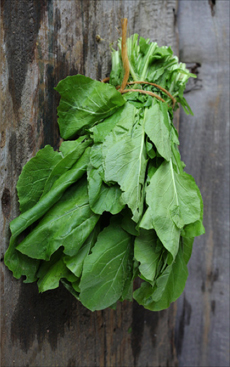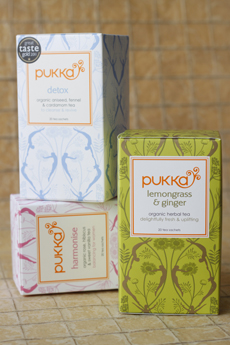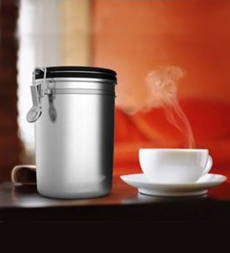|
If you’re looking for more ways to enjoy green vegetables, have you tried wilting?
Wilted vegetables are served at some of the finest restaurants in the country, often with a filet of fish or a boned chicken breast on top.
Wilting is a quick cooking technique that involves placing the greens in a hot butter or oil, until they’re barely cooked (i.e., wilted). We actually use a low-calorie technique, blanching the vegetables in simmering broth or stock.
The Wilting List: Simply add delicate, leafy vegetables—arugula, beet greens, bok choy, chard, collards, dandelion greens, kale, mustard greens or turnip greens—to a pan of simmering liquid (broth or water) and they wilt in a minute. barely cook or just “wilt.” As you can see, wilting is also a great way to discover the joys of greens you never eat.
You can also wilt a medley of three different greens, such as chard, mustard greens and spinach. See the recipe below.
|
|

Crispy salmon atop wilted greens. Photo courtesy Sur La Table. |
Dark leafy greens are some of the most nutrient-dense foods on the planet, and wilting preserves nutrients and flavor. So why isn’t everybody wilting greens?
To begin your journey here’s a recipe developed in the Sur La Table test kitchen; more wilting techniques follow.
RECIPE: CRISPY SALMON ON LEMON-CAPER WILTED GREENS
You can substitute another vegetable for the spinach and halibut or other firm-fleshed filet for the salmon.
Ingredients For 4 Sservings
2 tablespoons extra-virgin olive oil
4 (5-ounce) salmon fillets with skin
1 tablespoon unsalted butter
1 shallot, minced
1 clove garlic, minced
2 zucchini, thinly sliced
½ pound spinach, washed and patted dry
2 teaspoons capers, drained
2 teaspoons lemon zest
2 tablespoons flat-leaf parsley leaves
¼ cup heavy whipping cream
Kosher salt or sea salt, plus and freshly ground black pepper
|

Wilt me! Have you had these greens before? They’re mustard greens. Photo courtesy GoodEggs.com. |
|
Preparation
1. PREHEAT oven to 400°F and position the oven rack in the middle.
2. PLACE a large oven-proof skillet on the stove over a medium-high heat, and add olive oil. When the oil is just starting to shimmer, add the salmon, presentation side first. Sear to a light-golden brown color, about 2 minutes. Turn the salmon over to the skin-side and transfer to the oven. Bake until the salmon is flaky and slightly pink inside, about 5 minutes. Transfer the salmon to a plate; reserving the skillet and set aside.
3. PLACE the skillet back on the stove over a medium heat and add the butter. Once the butter begins to foam, add the shallot and garlic and sauté until soft, about 2 minutes. Add the zucchini, spinach, capers, lemon zest, parsley and cream. Cook until the spinach is wilted, about 2 minutes. Taste and season with salt and pepper.
4. SERVE: Spoon the wilted greens mixture onto warmed dinner plates, and place the salmon on top. Serve immediately.
|
BASIC WILTED GREENS
Don’t worry if it seems like you have too many greens. Big bunches of leafy greens wilt down to flatness.
Ingredients
2 large bunches chard, kale, mustard greens or others (see list at top), rinsed
1/4 cup olive oil
1 medium yellow onion, thinly sliced
1-1/2 teaspoons kosher salt or sea salt
Preparation
1. TEAR the greens into pieces; discard stems. (Note: We actually enjoy the stems, and keep them on. We also like to keep the leaves whole—we don’t mind cutting them on our plate with a knife and fork. Try it to see which you prefer.)
2. HEAT the oil in a pot over medium heat. Add the onion and cook for 7 minutes. Add the greens and toss to coat. Cover and cook, stirring once, until wilted, about 2 minutes. Add the salt and serve.
3. SEASON as you like with balsamic vinegar, chiles, honey, garlic, nutmeg or other favorites. As an option, garnish with toasted pecans or walnuts.
Variations
For breakfast, brunch or lunch, top with poached eggs.
You can also add ham or bacon, Southern-style, as in this recipe.
STOVE TOP WILTING
This recipe uses a medley of greens, although you can use only one type or a different combination.
Ingredients
3 tablespoons butter or olive oil
1 large bunch chard, stems removed*, leaves torn
1 large bunch mustard greens, stems trimmed, leaves torn
1 10-ounce bag spinach leaves
1/3 cup chicken stock or canned low-salt chicken broth
Preparation
1. MELT butter in heavy large pot over medium-high heat. Add all greens and stock.
2. COVER and cook until greens wilt, stirring occasionally, about 3 minutes. Uncover; cook until juices thicken slightly, about 4 minutes.
3. SEASON with salt and pepper and any other seasonings you like (balsamic vinegar, chiles, garlic, nutmeg, etc.).
SIMPLE MICROWAVE WILTING
1. WASH the greens in cool water and place in a microwave-safe bowl.
2. COVER with plastic wrap and punch several holes in the wrap to vent. Microwave on High until wilted, 2 to 3 minutes.
3. SQUEEZE out any excess moisture from the greens before seasoning and serving, or adding to a recipe.
|
|








